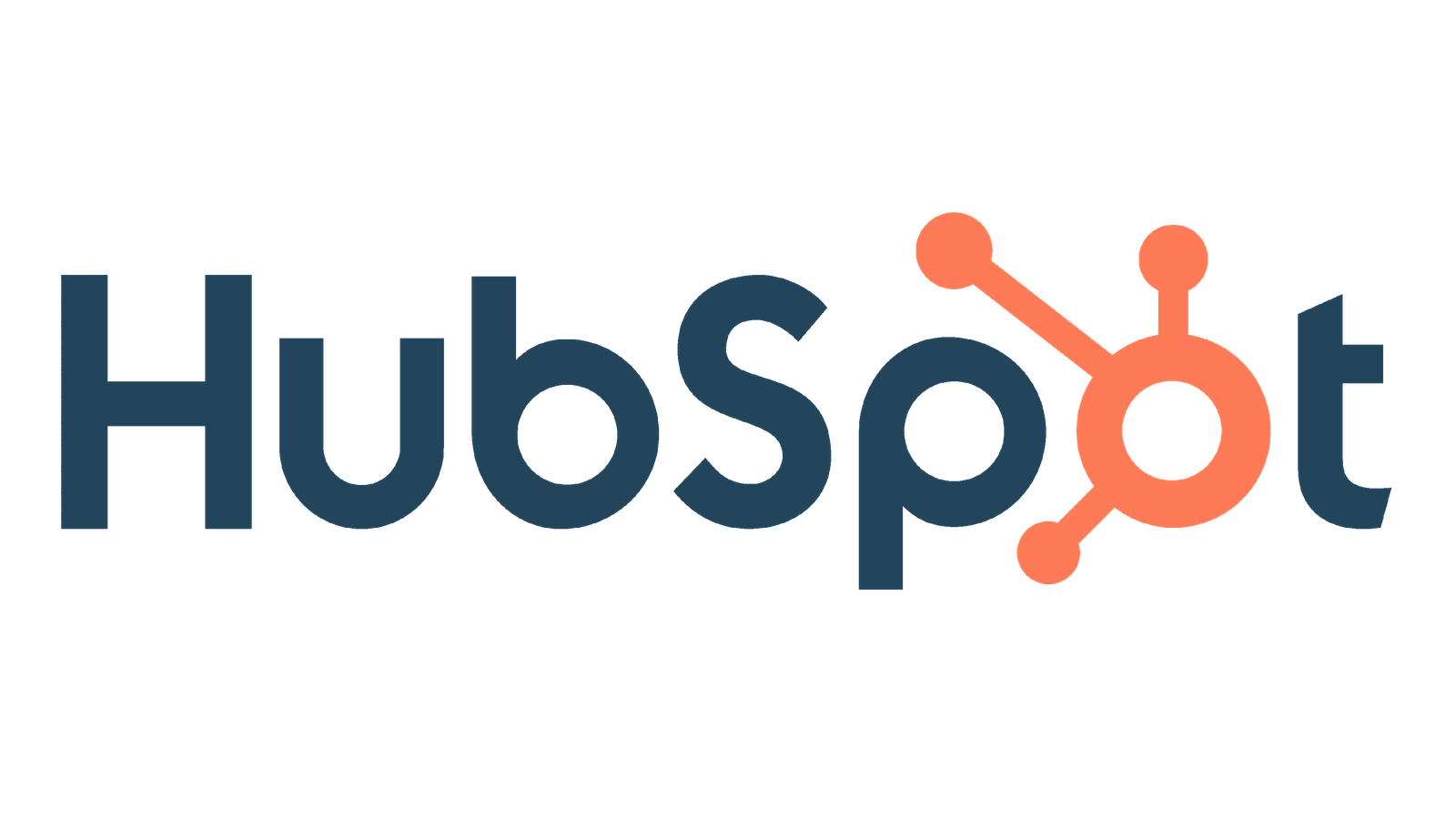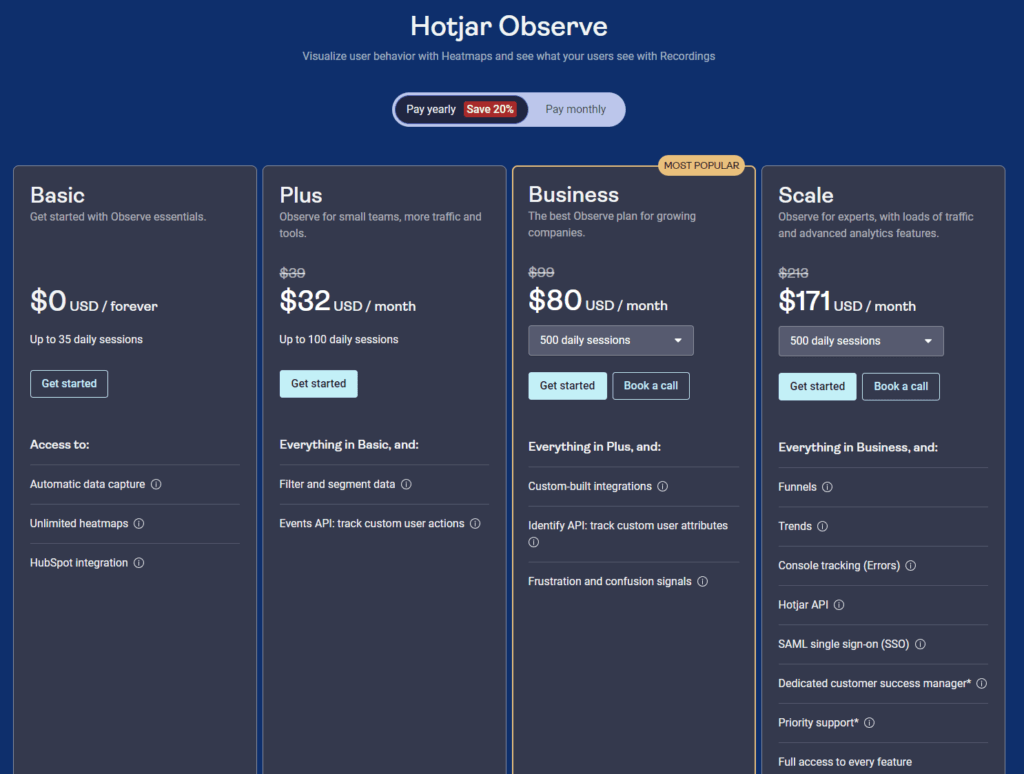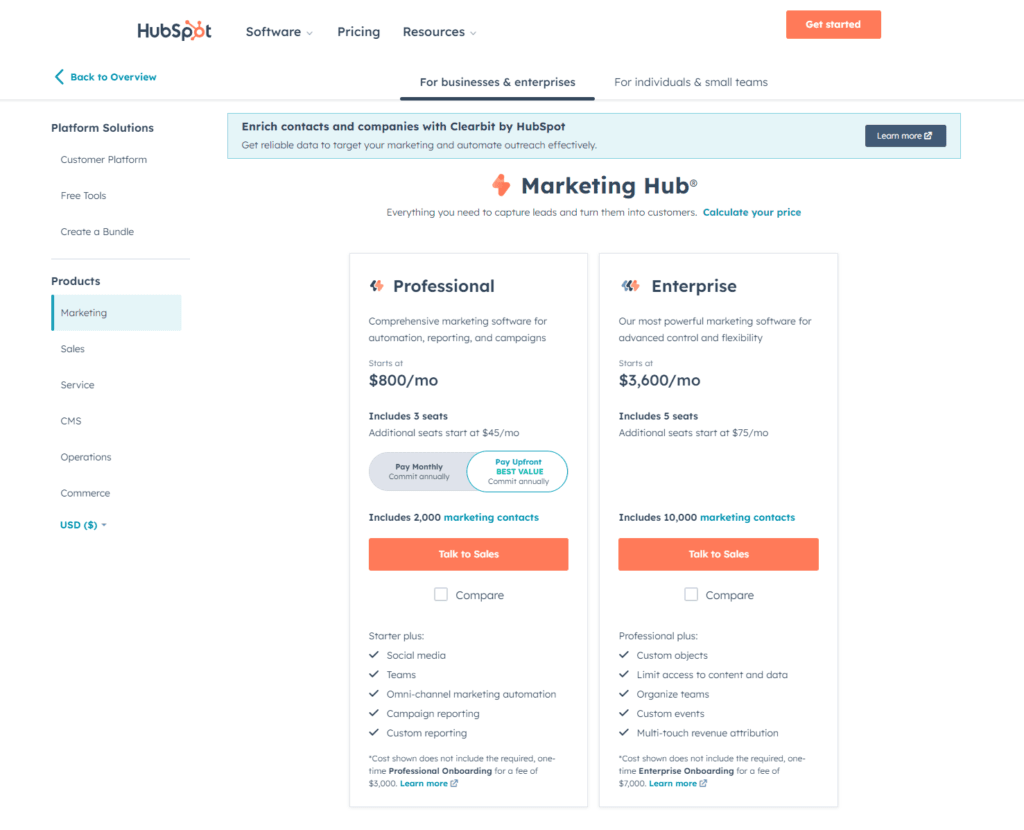In today’s digital age, understanding your audience is not just an advantage—it’s essential. With a sea of data available, the right analytics tool can be the compass that guides your marketing strategy to success. Enter Hotjar and HubSpot Marketing Analytics, two beacons in the analytics universe, each shining light on different aspects of your digital presence. But which beacon should you follow? Whether you’re charting user behavior on your website or measuring the effectiveness of your marketing campaigns, choosing the right tool is paramount. Let’s embark on a journey to discover which analytics tool, Hotjar or HubSpot Marketing Analytics, is the best fit for your needs.
| Hotjar | HubSpot Marketing Analytics |
|---|---|
 |  |
| G2 Score – 4.3 out of 5 stars | G2 Score – 4.4 out of 5 stars |
| TrustRadius Score – 8.2/10 | TrustRadius Score – 8.5/10 |
User Experience and Interface
Navigating with Ease
One critical area where Hotjar and HubSpot Marketing Analytics differ significantly is in their user experience (UX) and interface design. This difference affects not only how quickly you can adopt these tools but also how effectively you can gather and interpret data to make informed decisions.
Hotjar: The Beacon of Intuitive Navigation
Hotjar stands out for its dedication to providing an intuitive and straightforward user experience, making it a favored tool among businesses looking to gain immediate insights into user behavior without getting entangled in complex data analysis. The platform’s interface is clean and uncluttered, emphasizing visual data representation like heatmaps, session replays, and feedback widgets, which allow users to quickly grasp user interactions and sentiments. This simplicity is Hotjar’s hallmark, ensuring that valuable insights are just a few clicks away, without the need for extensive training or technical know-how.
The ease with which users can set up and start collecting data is a testament to Hotjar’s user-centric design philosophy. Whether it’s analyzing a heatmap to understand where users are clicking or watching a session replay to see how users navigate through a site, Hotjar makes these tasks feel intuitive. This approach not only demystifies analytics for non-technical users but also empowers teams across the organization to engage with data more directly, fostering a culture of continuous improvement and user-centricity.
HubSpot Marketing Analytics: Navigating the Comprehensive Dashboard
HubSpot Marketing Analytics, in contrast, offers a comprehensive suite of tools designed to provide a 360-degree view of marketing performance. Its interface is robust, designed to cater to the needs of marketers looking to dive deep into data across various channels. From email campaigns to social media interactions and website performance, HubSpot brings together a wealth of data under one roof, offering detailed insights that can inform strategic decisions.
The depth of HubSpot’s analytics capabilities is mirrored in its dashboard design, which, while rich and informative, can present a steeper learning curve for new users. However, this complexity is by design, as it reflects the platform’s ability to segment data, track detailed user journeys, and measure the ROI of specific marketing initiatives. For those willing to navigate its extensive features, HubSpot Marketing Analytics becomes an invaluable tool, enabling marketers to draw connections between disparate data points and uncover insights that can drive growth.
Integration Capabilities
The Ties That Bind Your Digital World
In the vast sea of digital marketing, the strength of your analytics tool often lies in its ability to integrate smoothly with other applications and services. Let’s see how Hotjar and HubSpot Marketing Analytics fare in weaving these critical connections.
Hotjar: Simplifying the Voyage with Key Integrations
Hotjar is designed with simplicity at its core, offering a streamlined approach to integrations that focuses on enhancing its primary functions of understanding user behavior through visual data. Its compatibility with a range of website platforms, including popular content management systems like WordPress, Shopify, and Magento, means businesses can easily implement Hotjar to start gathering insights without a complicated setup process. This ease of integration is crucial for businesses looking to quickly gain a deeper understanding of their users’ experiences without overhauling their existing tech stack.
Moreover, Hotjar’s ability to work in tandem with other analytics tools, such as Google Analytics, enables businesses to layer qualitative insights over quantitative data. This complementary approach provides a fuller picture of user behavior, merging the what with the why behind user actions on a website. For teams focused on optimizing user experience and conversion rates, Hotjar’s focused integration capabilities mean they can quickly implement changes and measure results within their existing digital environment.
HubSpot Marketing Analytics: Crafting a Comprehensive Digital Ecosystem
HubSpot Marketing Analytics, by contrast, offers a vast ocean of integration possibilities, reflecting its role as a central hub in the digital marketing strategy of many businesses. Its strength lies in the ability to deeply integrate with a wide array of tools and platforms, from social media and email marketing to customer relationship management systems and beyond. Being part of the broader HubSpot ecosystem, it naturally integrates with all other HubSpot tools, ensuring a seamless flow of data across the marketing, sales, and service platforms.
The extensive network of integrations available through HubSpot’s Marketplace allows businesses to customize their HubSpot setup to meet their unique needs. This flexibility is paramount for businesses that utilize a diverse set of digital tools, as it ensures data can be harmoniously collected, analyzed, and acted upon across different platforms. For companies that rely on a wide range of marketing channels and touchpoints, HubSpot’s comprehensive integration capabilities provide the scaffolding for a robust, interconnected digital marketing strategy.
Data Privacy and Compliance
Safeguarding the Digital Seas
The importance of data privacy and compliance cannot be overstated. As digital marketers, respecting and protecting user data is not just about following laws—it’s about building trust with your audience. Let’s delve into how Hotjar and HubSpot Marketing Analytics approach this critical responsibility.
Hotjar: The Beacon of User Privacy
Hotjar illuminates the importance of user privacy through its straightforward yet effective approach to data handling and compliance. Recognizing the global impact of regulations such as the General Data Protection Regulation (GDPR) and the California Consumer Privacy Act (CCPA), Hotjar has structured its services to offer flexibility and control to both the businesses it serves and their website visitors. This is evident in features designed to anonymize user data, offering users the ability to opt out of tracking, thereby enhancing trust and transparency between websites and their visitors.
Hotjar’s commitment to privacy extends to its communication and support for businesses navigating these regulations. By providing clear guidelines and tools for compliance, Hotjar ensures that businesses can easily implement privacy-conscious practices without sacrificing the depth of insights into user behavior. This approach not only safeguards user data but also positions businesses to build and maintain trust with their audience, an invaluable currency in the digital age.
HubSpot Marketing Analytics: Navigating Compliance with Precision
HubSpot Marketing Analytics takes a comprehensive approach to data privacy and compliance, integrating these principles into the very fabric of its platform. With a global user base and a suite of tools that touch on various aspects of digital marketing, HubSpot understands the complexity of navigating data privacy regulations. The platform is built with privacy by design, offering robust tools and settings that help businesses manage consent, process data access requests, and ensure data is handled in compliance with laws like GDPR, CCPA, and more.
Beyond the tools themselves, HubSpot serves as a lighthouse for businesses, guiding them through the complexities of data privacy with extensive resources, education, and support. This commitment to compliance is a testament to HubSpot’s dedication to empowering businesses not just to succeed in their marketing efforts but to do so in a manner that respects and protects the privacy of their customers.

Related: Check out our free SEO suite

Reporting Capabilities
The Beacon of Insights
Effective reporting is like a lighthouse guiding marketers through the fog of data, illuminating the path towards informed decision-making. Here’s how Hotjar and HubSpot Marketing Analytics shine their lights.
Hotjar: The Lens for Immediate Clarity
Hotjar’s approach to reporting is akin to providing a spyglass that brings immediate obstacles and opportunities into focus. Its reports are designed with the user in mind, offering a straightforward interpretation of user behavior through visual data representations such as heatmaps, session recordings, and feedback pools. These tools strip away the complexity that often accompanies data analysis, presenting clear and concise insights into how users interact with your website.
The strength of Hotjar’s reporting lies in its ability to highlight user experience issues and opportunities without requiring deep analytical expertise to interpret the data. For businesses focused on optimizing website performance and user interaction, Hotjar’s reports serve as quick and effective guides. They not only pinpoint areas of friction or disengagement but also celebrate what’s working well, providing a balanced view of the user experience.
Session recordings and heatmaps, for instance, can reveal the unspoken challenges users face, from confusing navigation to ignored calls to action. This level of insight equips teams to make targeted improvements, enhancing the user journey and potentially increasing conversion rates. The immediacy and visual nature of these reports make them particularly actionable, allowing teams to quickly iterate on web design and content strategies with confidence.
HubSpot Marketing Analytics: Navigating the Comprehensive Landscape
In contrast, HubSpot Marketing Analytics offers a comprehensive map of the digital marketing landscape, detailed with the contours of every campaign, interaction, and conversion. Its reporting capabilities are vast, covering the breadth of the marketing funnel from initial user engagement to lead conversion and beyond. This comprehensive approach provides businesses with a holistic view of their marketing efforts, highlighting how each element contributes to the overall objectives.
HubSpot’s customizable dashboards are at the heart of its reporting strength, allowing users to tailor reports to their specific needs. Whether it’s drilling down into the performance of a particular email campaign, analyzing social media engagement trends, or monitoring website traffic and conversions, HubSpot provides the tools to construct a detailed analysis of marketing activities.
The depth of HubSpot’s reporting enables a layered understanding of marketing effectiveness, offering insights into user behavior across multiple channels. This capability is particularly valuable for businesses looking to optimize their marketing strategies in real-time, adjust campaigns based on performance, and forecast future trends based on historical data. HubSpot’s analytics provide not just a snapshot of the current state of affairs but a dynamic instrument for predicting and planning future marketing moves.
Pricing
Hotjar

HubSpot Marketing Analytics

Conclusion
Choosing between Hotjar and HubSpot Marketing Analytics hinges on understanding your digital marketing needs, the complexity of your data analysis requirements, and the level of detail you seek in your analytics endeavors. Hotjar, with its user-friendly interface and focus on visual user behavior insights, is akin to a swift sailboat that’s perfect for quick explorations and adjustments. It’s ideal for businesses looking to enhance their website’s user experience and conversion rates with direct, actionable insights.
On the other hand, HubSpot Marketing Analytics is the robust flagship equipped to navigate the deep and sometimes turbulent waters of comprehensive digital marketing analysis. Its strength lies in its ability to offer detailed insights across various channels, making it a powerful tool for businesses seeking to understand and optimize their marketing efforts on a granular level.
Read Next:





















